
The Liminal Review: New Signals in Arts Technologies (2025) is published and presented by The Lumen Prize for artists who are creating new visual languages at the intersection of art and technology. The Lumen Prize Awards Ceremony forms the centerpiece of a weekend of exhibitions and panel discussions at Kunstsilo museum, Kristiansand, Norway, November 7 to 9, 2025.
The artists mentioned include Konstantine Vlasis; Sasha Stiles; Jeremy Kamal; Sofia Crespo; Hanlu Ma; Marlene Bart; aurèce vettier and Katarzyna Cichy; Kevin Esherick; Jonathan Washburn; and Liam Man.
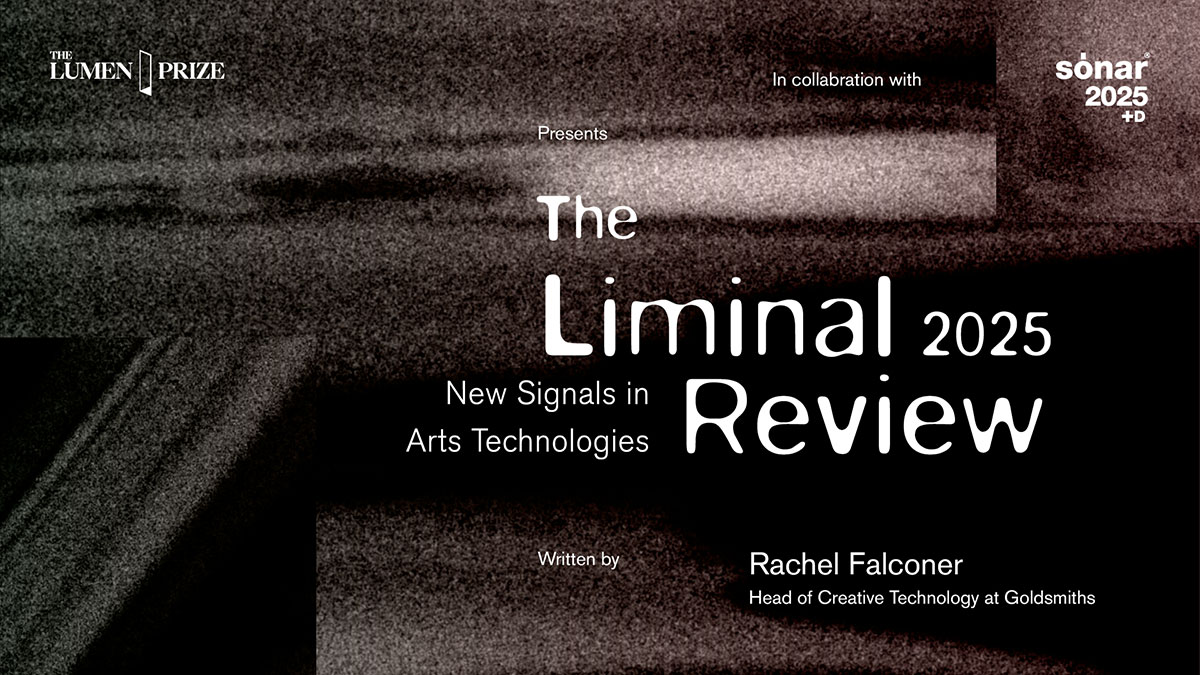
Working on The Liminal Review, Falconer says, showed that artists adopting advanced technologies represent not an alternative art canon but an augmentation to the traditional, mainstream, canon. The essays in the review, she says, are not intended as a “trend report” but as intermingled provocations that situate the Lumen artists in a “growing ecology of knowledge and cultural exchange”.

Synthetic Trauma and the Poetics of Erasure by Rachel Falconer
Over the past year, the digital art field has undergone a notable recalibration in its engagement with trauma, memory, and planetary crisis. Moving away from the illustration or reiteration of trauma through direct representation — whether as personal narrative, historical memory, or journalistic account of environmental catastrophe — artists are increasingly deploying a mode of working through, or what might be described as a synthetic trauma. This shift signals a move away from the indexical towards the computational: trauma is no longer simply depicted, but processed, encoded, and reconfigured through algorithmic systems, immersive environments, and networked aesthetics to create recursive modes of healing, transformation, and speculative new futures.
Within this emerging terrain, memory is fragmented and recomposited, ecological devastation is mediated through speculative simulations, and affect is rendered machinic.
What comes out of these new approaches is not a clinical distancing, but a reorientation and an expanded field in which the psychic and the planetary are rendered as entangled, co-mingled entities through the architectures of code, data, and digital image. Here, synthetic trauma is not an aesthetic style but a condition: an unstable convergence of mediation, repetition, and technological inscription that both reveals and reshapes our sticky entanglements with crisis and trauma at both the micro and planetary scale.
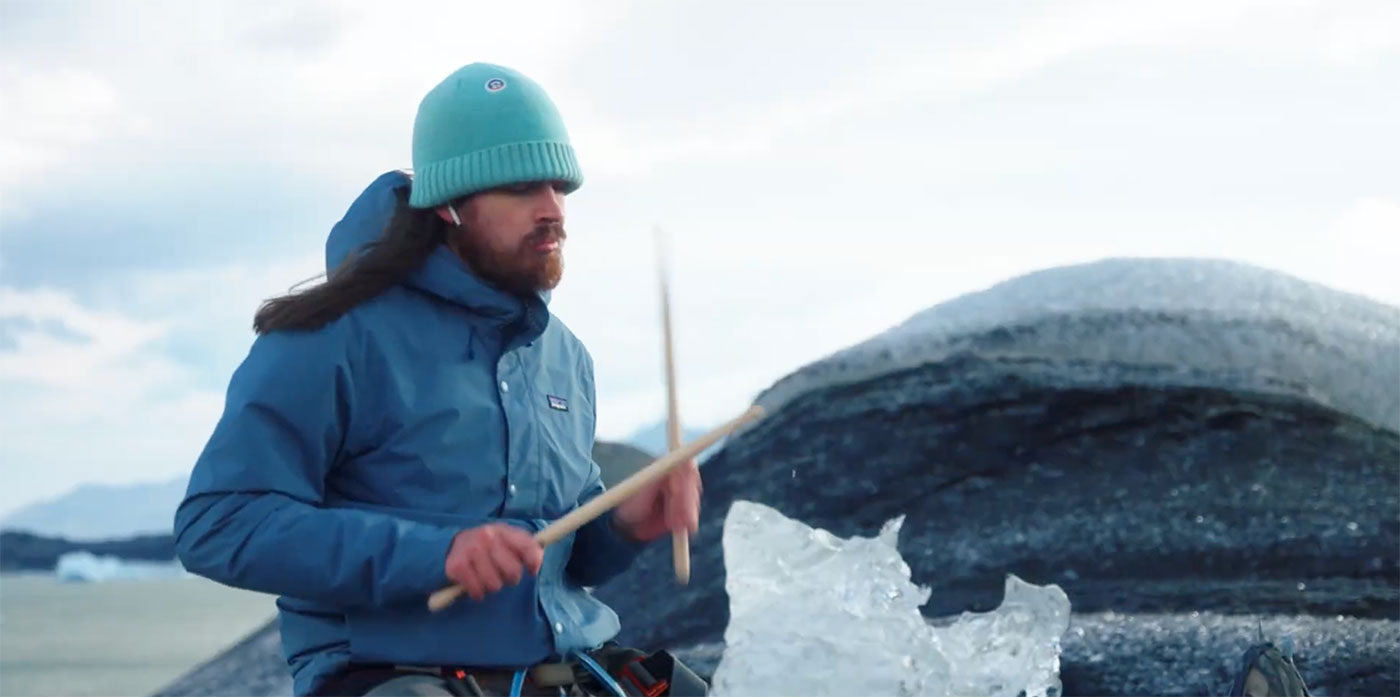
Synthetic trauma manifests as the affective simulation of loss, absence, and rupture generated and mediated through artistic practices placed in dialogue with advanced technologies such as AI, generative systems, and immersive media. The result of these new modes of engagement is a co-authored, recursive “living through” of trauma where computational modes and models of storytelling intervene in memory, recall, and ecological reportage. The works reflected in The Lumen Prize selection, which respond to and reflect synthetic trauma, create new forms of affective, collective resonance — hallucinating with archives, resurrecting, and working through the erratic and unreliable authorship of trauma narrative lines, both those already lived and those yet to come.
A poignant example of this is Lumen Prize finalist Konstantine Vlasis’s submission 2124 — a data sonification work which tracks the “human ecology”of glaciers. In this piece, data and field collection map the future recession of the Breidamerkurjökull outlet glacier in southeast Iceland and inform the ever-increasing tempo of the musical composition. Based on this data set, alongside the continuously repeating sticking pattern (LL-R-LL-RRRR; 2-1-2-4), each iteration of the rhythmic sequence represents one year of time.
The audience is exposed to the ecological generative decay of the glaciers as live performance through listening to the piece, and a sonic depiction of how quickly the glacial mass will change over the next century is revealed.
Additionally, a journey of this deterioration and ecological demise is further revealed through microphones positioned between the ice block and the glacier’s surface, taking listeners from the surface of Breidamerkurjökull into the ice itself, and finally, through its state change from solid ice to liquid water.
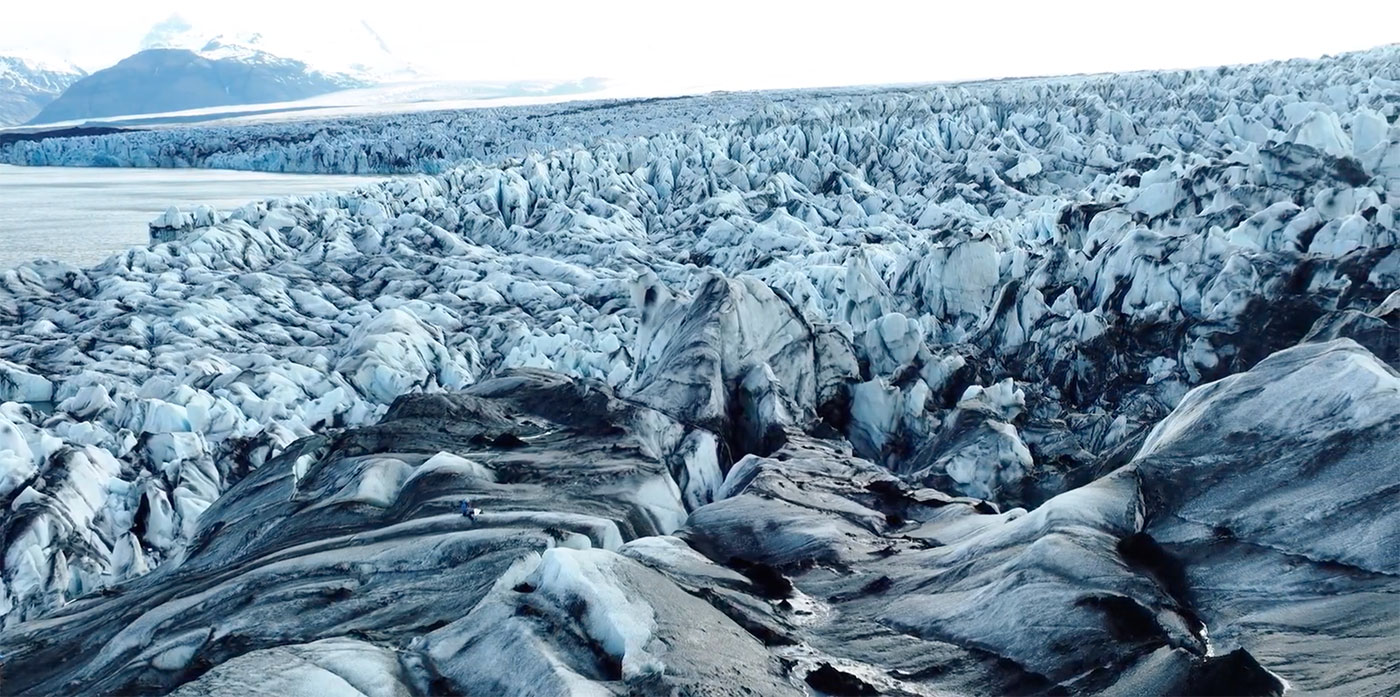
Artists and curators are engaging with advanced technologies not only as tools of reportage, data excavation, and narrative reproduction, but also as co-authors in new critical simulations and open worlding, fictioning around trauma and memoryscapes in all their permutations. This conceptual turn in computational art is also characterised by what can be called mimetic trauma rendering. This can be identified in artworks that reflect and embody the psychological imprints of emotion and lived experience through machinic logics, neural patterning, and poetic generation.
Projects like WORDS BEYOND WORDS, by Lumen Prize artist Sasha Stiles, is a compelling example. In this ongoing project and engagement with poetry as art, her system of AI-generated poetry reflects the fusion of affective computing with poetic form, offering textual interfaces where emotions trigger real-time poetic responses. This hybrid work, which represents the confluence of art and science, goes beyond the display and simulation of emotional trauma or memoryscapes misremembered or in mutation, and instead mirrors the trauma back to the user, inviting emotional entanglement and therapeutic reflection.
Stiles sees poetry as a technology and as a data storage solution where poetic devices are used to store emotions. In the artist’s view, poetry is not an antiquated linguistic luxury or niche whimsical literary indulgence, but is core to how humans communicate — an emergent property through which to encode emotions and transmit the unsayable and unspeakable.
Poetry generated through systems such as Machine Learning and AI here become the mechanisms through which to unlock emotional landscapes and lived affective realms of restructured traumas.
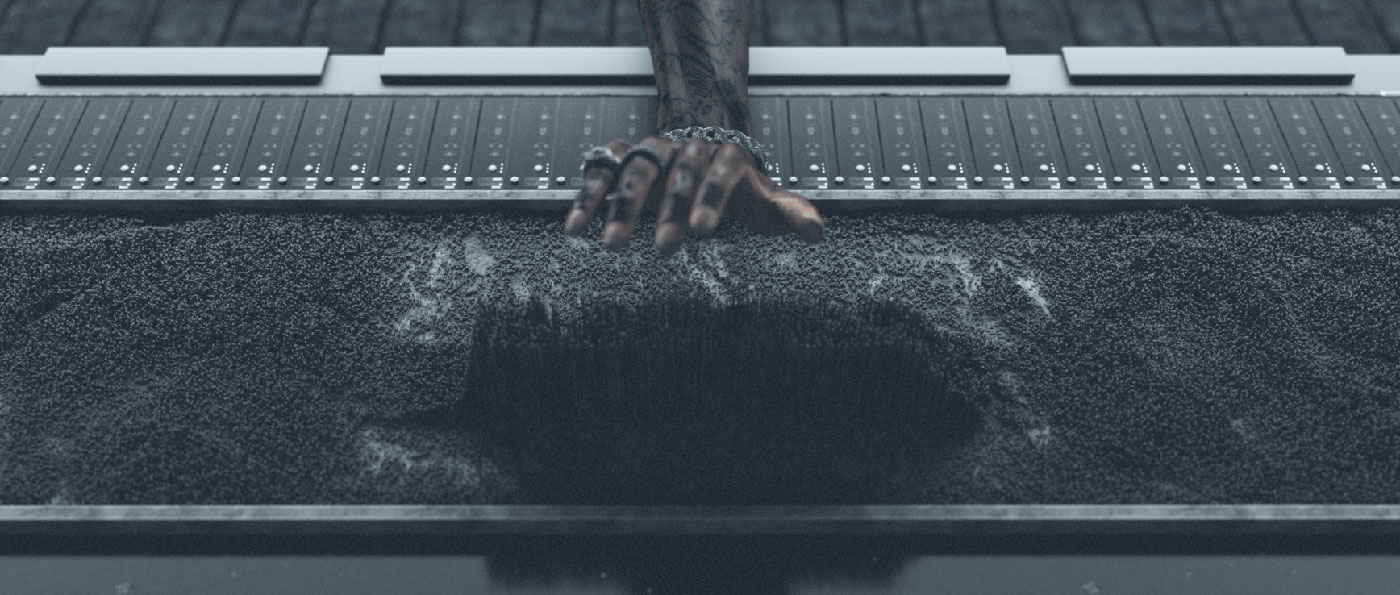
Synthetic trauma can also be traced through the genre of Cli-Fi (climate fiction), which has found a new visual language through moving image to generate speculative futures and altered ecologies. Lumen Prize artist Jeremy Kamal has continued to push the limits of immersive memory spaces, using climate models to construct dreamlike environments that blend cultural memory and recast future-facing scenarios of cultural terraforming imagined otherwise. His work Mojo: The Floods is an animated Afrofuturist geomyth where overlooked rituals of contemporary Black culture shape the environment and ecosystems. Presented as a single-channel short film depicting a speculative ecology, a trap producer controls a whole watershed through their mixing board. His work often operates as a site of healing, restaging and actively foregrounding the environment as both witness and casualty of cultural trauma, creating a more inclusive space of sensory space access, reflection, and ecological recalibration.
Building on this impulse towards the reclaiming and recalibration of narratives through synthetic trauma is the aesthetic of glitch or erasure, a formal motif that has returned with renewed conceptual depth this year through The Lumen Prize submissions. No longer simply a byproduct of technological error, glitch, erasure, and absence are now strategically used to represent ruptured memory, lost archives, and digital disintegration. Lumen Prize artist Sofia Crespo’s submission Perpetual Present uses as its genesis subject matter the disappearing histories of our Palaeolithic ancestors who painted caves in Altamira — narratives, species, and aural cultural transmissions that have now been erased, eradicated, or decayed to such an extent that they exist only as materials to be reinterpreted and reimagined through technology.
Through the use of advanced technological imaging tools, new truths and narratives of the cave paintings emerge, and the necessity for a recalibration of storytelling through and with these fragmented and unreliable histories is necessitated through the work of the artist.
The results are fragmented, bias-infused, multi-renderings of fallible histories and misconstructions of extinct species, through which this poetics of erasure is performed as a visual metaphor for cultural silencing.
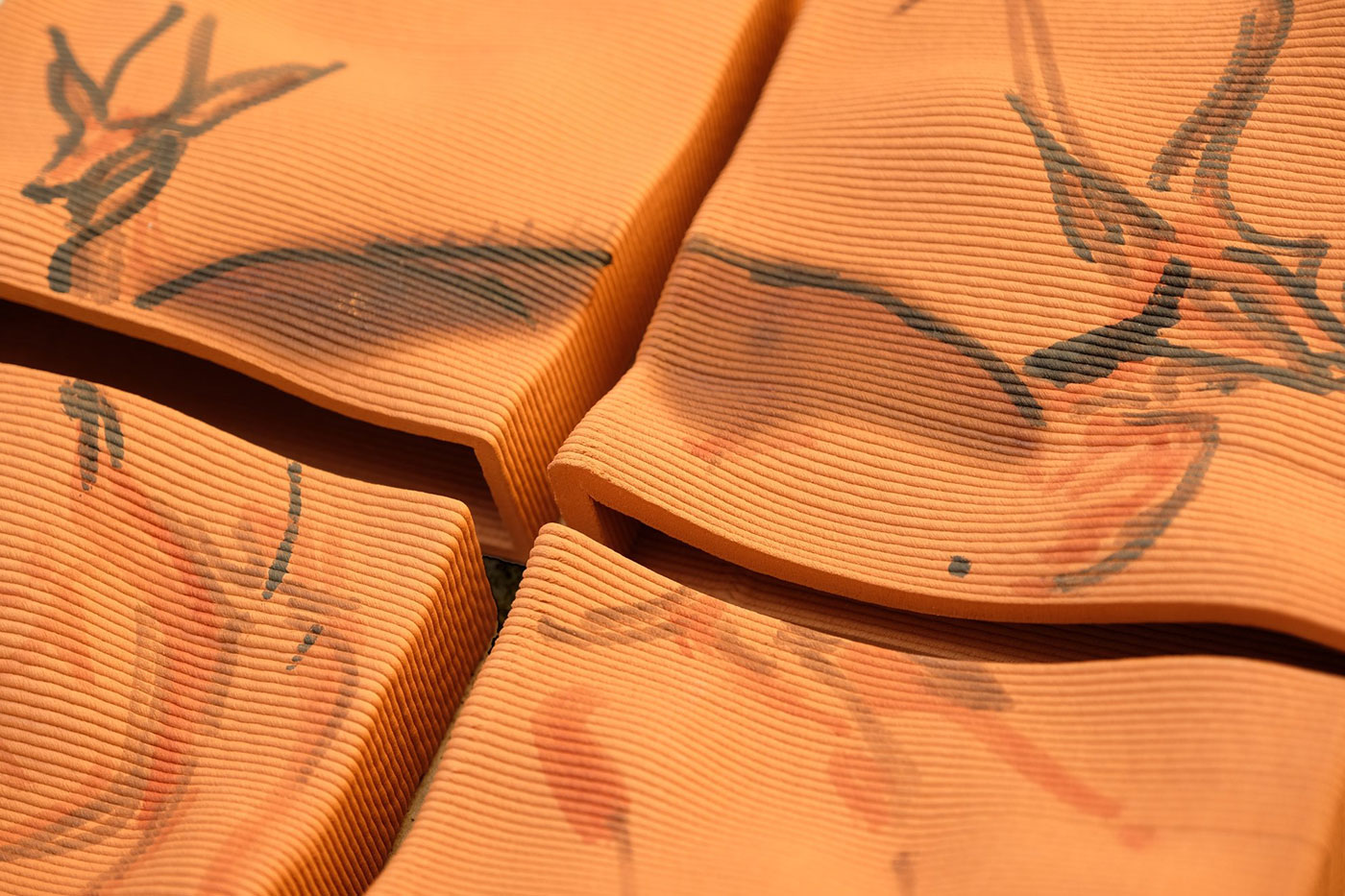
In conversation with Lumen Prize International Selectors Committee Member Diane Drubay, we discussed her perspective as an arts professional who works closely with artists engaged in new ecologies and cosmologies. When asked about her relationship and response to the term Synthetic Trauma, she observed that artists are inclining more towards poetry than trauma as a tool to build bridges toward desirable futures. However, when artists do work with trauma, she has identified their tendency towards the generation of an emotional line through, particularly through the immersion in ancestral legacies, narrative, and symbolic iconography, creating spaces to “pause, to open ourselves.” She cites artist John Gerrard’s real-time simulations as a poignant example, highlighting how his work generates, at first glance, a hypnotically slow, meditative state of engagement, but on closer inspection, the narrative drive centers around extractive processes and environmental crisis, bringing “trauma into visibility” and inviting reflection.
[Diane] Drubay also cites the artist Tabita Rezaire’s practice of techno-spiritualism to deploy connections with ancestral rituals and heritage.
As Rezaire’s work invites a critical reading of colonial infrastructure and narrative regimes, Drubay affirms that she “invites us to enter a reality of inclusion, generosity, care, and healing.”
Turning her attention to the question of erasure, Drubay acknowledges that “the perspectives of the other, the queer, the unseen, and the zeros are still systematically excluded, often embedded into the very technology we use.” But digital artists don’t stop at pointing this out. With the endless possibilities offered by emerging technologies, they can now build responses. They create worlds where the glitch is the hero. Citing key works by artists Manon Pretto and Sabrina Ratté, Drubay circles back to the theme of Synthetic Trauma and Poetics of Erasure, defining poetics as “not about despair,” but as “tools for reimagining, for repair, for building kinships that might carry us somewhere new.”

When asked to identify key works from The 2025 Lumen Prize submissions that she has been particularly drawn to, especially those engaging with her area of specialism — ecological questions — Drubay highlights a key distinction between artists who treat the topic as spectacle and those who address the developing ecological degradation through a lens of sensitivity. She cites the artist Hanlu Ma’s submission as a compelling case in point: “What struck me was the capacity to merge different types of cultures and disciplines, like science and storytelling, or data and emotion. The post-natural ideology behind Hidden Incidents of Pet Food by Hanlu Ma stayed with me.
With the use of AI, the artist created 6,000 portraits of fictional cats who died from taurine deficiency in industrial pet food, revealing a gap between scientific discovery and public policy.
I saw in this artwork a strong critique of the current system, a mirror for other species who also live with toxicity. Think of how we interact daily with pesticides, pollutants, or endocrine disruptors.”

Pivoting to Lumen Prize artist Marlene Bart’s VR experience Theatrum Radix, Drubay highlights the artist’s engagement with the post-anthropocentric casting of classical natural archetypes of knowledge, such as trees, to produce narratives of decentralized non-human weighting. Continuing her observation of poetic approaches to the careful and tender holding of grief and trauma, she cites the work lunamare caelestis, etc. (sent from above), in which Lumen Prize artists aurèce vettier and Katarzyna Cichy explore quiet meditations on loss through a series of AI-generated bronze butterflies. Emerging from algorithmic processes which are then cast in the permanence of bronze, the works inhabit a liminal space between the ephemeral and the eternal. Their fragile forms — delicate yet enduring — speak to the lingering presence of grief, the fragmentation of memory, and the alchemical potential of art to transmute sorrow into beauty. In this sense, lunamare caelestis, etc. (sent from above) becomes a powerful example of how digital art can hold space for tenderness, offering not just aesthetic reflection but a symbolic vessel for mourning and metamorphosis. Drubay concludes her analysis of this year’s submissions by commenting that “among the submissions reviewed, a certain kind of urgency is present. A call to resist, to keep creating new cosmologies.
As we cast our view to future tensions and trends within this theme, Drubay cites the ecological and ethical dimensions of digital art emerging as central points of critical focus. She makes the point that as artists accelerate their engagement with AI, immersive technologies, and computational systems, an urgent tension surfaces: the environmental and political cost of the tools themselves. Noting that “these infrastructures are not neutral,” she emphasises that “they are shaped by colonial histories, extractive logics, and systemic bias.”
For many practitioners in the field, the relationship to technology is deeply ambivalent. While some treat techne as a collaborator — “even a friend” — there is a growing recognition that this relationship demands critical reflection and recalibration.
Drubay states, “we urgently need to create alternatives that align with more-than human ethics,” pointing to the necessity of technological frameworks that respect both ecological entanglements and post-human kinships.

Beyond this critique, she observes a notable aesthetic and conceptual shift taking place in digital art. “I’m starting to see a move away from immersion and world-building toward what I call world-becoming,” she explains. “It’s not about constructing imaginary futures anymore, but about entering into relation with what already exists.” Artists today are forging connections with living and non-living beings, with matter, memory, language, and place — forming alliances that feel less like speculation and more like restoration.
Temporality, too, appears to be shifting.
Whereas digital art once gravitated toward distant, speculative futures, the present moment seems more anchored in cyclical or layered understandings of time.
“Artists are building strong bridges between the past and the future, between remembrance and invention, to better be present,” she says. Quoting artist and theorist Neema Githere, Drubay leaves us with a question that encapsulates this evolving terrain:
“How do we navigate somatic embodiment in an algorithmic present?”

In a subsequent interview with Lumen Prize International Selectors Committee Member Gonzalo Herrero Delicado, Curator of the Art Dubai Digital Sector (2025), he defines this moment characterized by ecological collapse as a challenge to digital artists who are grappling not only with the loss of species and coastlines, but with something less tangible — something harder to measure. “We are also losing memory, coherence, and the ability to grieve at scale,” he reflects. This collective grief, abstract and unprocessed, is becoming a central concern in computational arts practice.
In collaboration with increasingly sophisticated tools — simulations, machine learning, immersive environments — artists are attempting to respond. But as he asks pointedly, “Can these technologies do more than represent loss? Can they help us reckon with it?”.
Much of the digital art emerging in response to the environmental crisis is marked by a spectral aesthetic.
Visual vocabularies of glitch, distortion, and erasure recur — techniques that gesture toward the disintegration of ecosystems and the fragmenting of planetary consciousness. These effects, Herrero Delicado explains, are deeply symbolic, yet they come with a caveat.
“These are powerful metaphors, but they risk becoming empty gestures if not tied to a deeper inquiry and action. If trauma becomes just another visual effect, we lose the urgency of the story.”

Still, there is potential he suggests. Digital media offers a unique capacity to render the invisible visible — to see what is vanishing. Whether through data-driven landscapes, speculative archives, or AI-generated memoryscapes, artists are not just creating new worlds, but recovering traces of the old ones. They become witnesses to what industrial capitalism has long sought to erase, giving form to griefs that have yet to be spoken.
“Artists can trace the outlines of ruined worlds, speak for the more-than- human, and map emotional terrains for which we have no language,” he observes.
The most resonant digital works, [Gonzalo] Herrero Delicado argues, don’t comfort or catastrophize — they unsettle.
They resist binaries of hope and doom, instead asking viewers to sit with discomfort, complexity, and complicity. In an era where data overwhelms and political action stagnates, such works carve out vital space for affect and attention. “The best digital work reminds us that feeling is a form of knowledge,” he says. “And that paying attention, even through a screen, is still an act of care.”

In further discussions around this subject, Annie Bicknell, Curator of Public Practice at Tate and Lumen Prize International Selectors Committee Member, expands on this first theme of The Liminal Review by describing what she sees as the “space of Synthetic Trauma.” For Bicknell, many of the most compelling works in The Lumen Prize submissions this year operated not through direct representation, but through fragmentation, compression, and spectral evocation — where memory and loss linger just out of reach, never fully resolved.
“I was particularly struck by the works that harnessed generative AI and large language models to gather, compress, and reconfigure vast archives of imagery,” Bicknell reflects. “These pieces felt like vessels: capable of holding multitudes, offering portals into forgotten or buried moments.”
Her invaluable curatorial perspective highlights an emerging aesthetic tendency — one that trades illustrative narratives for something more distilled and open-ended. In these works, narratives designed around suppressed histories, emotional registers, and digital processes collapse into single resonant frames, creating works that feel less like static, ossified documents and more like relational, dynamic rituals of knowledge production. “There’s a quiet power in how infinite fragments can be gathered into one place,” she says.
“They form a kind of memorial — a reminder not just of what has been lost, but of what must not be forgotten."

Among the pieces that left a lasting impression on Bicknell was Kevin Esherick’s I’m With You, a deeply personal and formally inventive work. By consciously intervening in and interrupting the image-generation process, Esherick creates ghostly, half-formed portraits — visual echoes of grief and time. “Having lost my own brother too young, I was deeply moved by this work,” Bicknell reflects. “The images hover, incomplete, just as our recollections often do. They mirror the way memory erodes over time.” She cites other artists who approached historical trauma with an equally evocative, if more confrontational, force.
Jonathan Washburn’s #27, part of his Past Forward series, draws from an archival repository of racial violence in the United States.
For Bicknell, the impact is unflinching: “His work doesn’t just document. It confronts. It demands memory, it insists on reckoning, and it refuses the comfort of forgetting.”
“Their work doesn’t offer closure,” Bicknell concludes. “It invites us to feel what is difficult. And in that feeling, perhaps there is a kind of communal tending to grief. In a world where so much is vanishing, that act alone feels vital.” This constellation of practices signals a broader trend as digital art is increasingly functioning as an affective interface between human memory and machine interpretation. The past twelve months have seen an explosion of interest in artworks that treat the affective landscape of trauma and loss not as static, but as a dynamic — subject to distortion, hallucination, and reconfiguration by generative systems. Whether through text, image, or immersive environments, these works share a commitment to excavating loss, simulating memory, and engaging with trauma — not to reproduce it, but to process and possibly transform it.

As we move deeper into an era of generative aesthetics, the question becomes: can machines not only remember for us, but feel with us? The digital artists of 2024-2025 seem to answer with a cautious yes — inviting us into a speculative space where poetry, memory, and technology collide.
Anxiety around environmental crisis scenarios also pulsed through many of the works — particularly those using large language models and generative AI to process visual data on ecological collapse.
The artists working with this subject matter, Bicknell notes, confront a common paradox: using energy-intensive technologies to critique the very systems driving planetary destruction. “Many of the artists walked a fine line between critique and complicity,” she observes. “For me, the question became: can data-driven aesthetics adequately reckon with the environmental cost of their own production?”
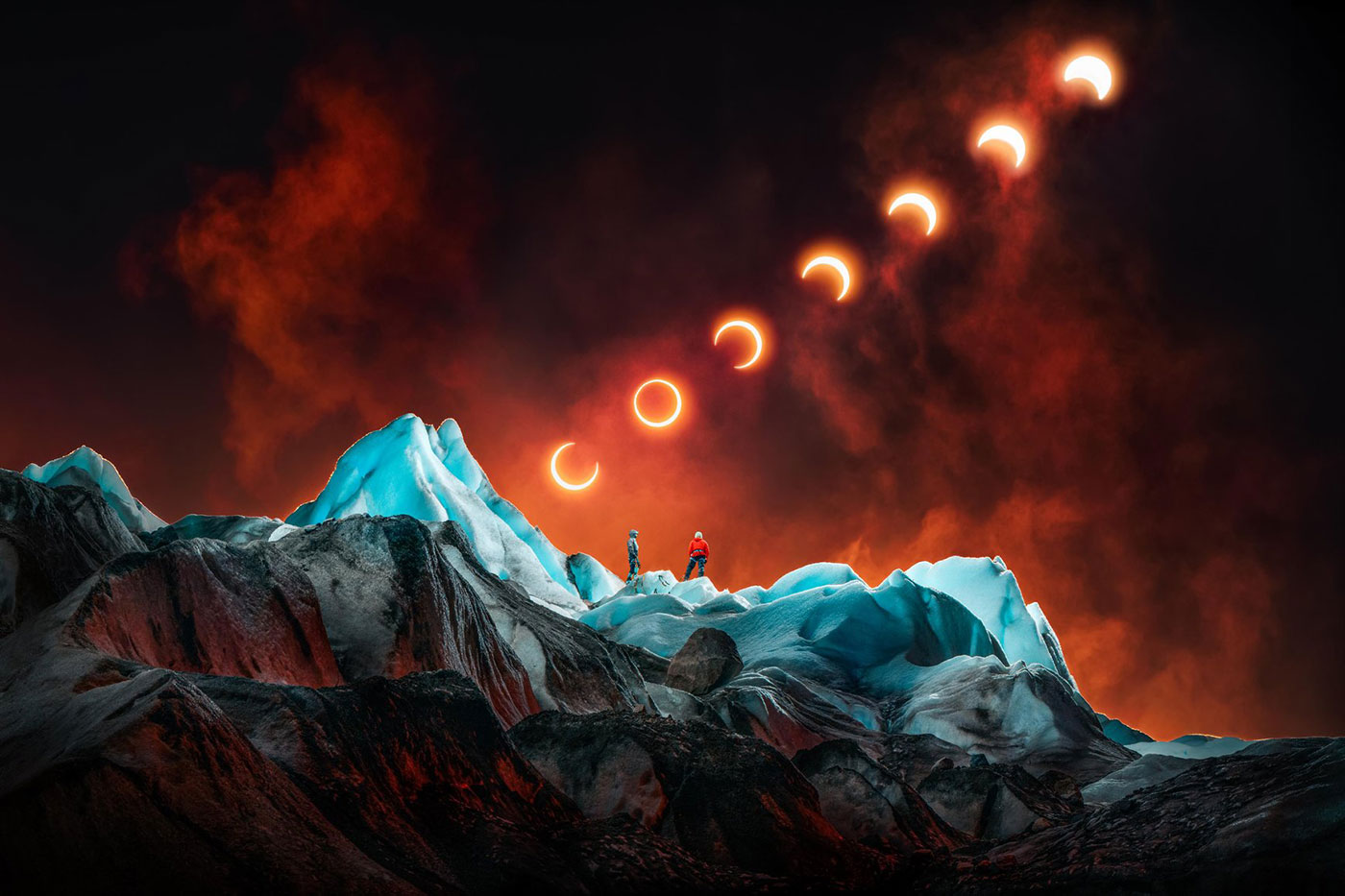
In this context, simplicity of approach sometimes carried more weight for Bicknell. Liam Man’s Ring of Fire, and Ice, composed using traditional drone photography, offered what Bicknell calls “a different kind of clarity.” In contrast to more heavily mediated digital works, Man’s piece offered an “immediate, unfiltered witness to the vanishing of our planet’s ice. Sometimes, simplicity sharpens impact.”
However, moving beyond the critical lens, another tension underpinned this year’s works: Can art — particularly digital art — act as a form of healing in the face of trauma? For Bicknell, the answer is cautious. “I remain uncertain,” she admits.
“I don’t believe trauma can be healed through image alone. But I do believe art can open doors. It can create the conditions for connection, for reflection, for remembering.”
As we move deeper into an era of generative aesthetics, the question becomes: can machines not only remember for us, but feel with us? The digital artists of 2024-2025 seem to answer with a cautious yes — inviting us into a speculative space where poetry, memory, and technology collide.
Rachel Falconer is a digital art curator, researcher, writer and educator operating at the critical intersections of contemporary art practice, feminist technoscience, emergent technologies, civic data infrastructures and networked culture. She is Head of Creative Technology and a Lecturer in the Department of Computing, at Goldsmiths, London. Drawing on her sustained interest in networked art practice and alternative curatorial strategies to inform her systems-based practice, Rachel has conceived and delivered multi-scale interdisciplinary public programming, alternative exhibition models and innovative public research platforms spanning a diversity of critical modes of engagement with technology.
Falconer has curated and conceived exhibitions and artist residencies which engage with radical logics and politics of distributed audiences and exhibition modelling. She is dedicated to the critical investigation of the complex relationship between network apparatus and the materiality of technological/social behaviours.S he has participated in public programmes at institutions including; Tate, Barbican, ICA,V&A , The Photographers Gallery, FACT, Royal College of Art, The Lumen Prize, Rhizome, Arebyte Gallery, London Design Festival, The Institute of Network Cultures (Amsterdam), FABRIKKEN (Copenhagen), EVA London and Furtherfield.
The Lumen Prize was founded by Carla Rapoport in 2012. It champions the innovative possibilities of technology-driven creativity, and showcases artists who are pioneering new visual languages at the intersection of art and technology. It creates opportunities for Lumen artists by curating exhibitions, commissions, and events for art venues, cultural institutions, and public spaces worldwide. The 2025 awards ceremony is at Kunstsilo, Kristiansand, Norway, on November 8, 2025.
The Liminal Review 2025 is published and presented by The Lumen Prize in co-operation with Sonar+D and with support from Onassis ONX. © 2025 The Lumen Prize Foundation, Inc. All rights reserved.

